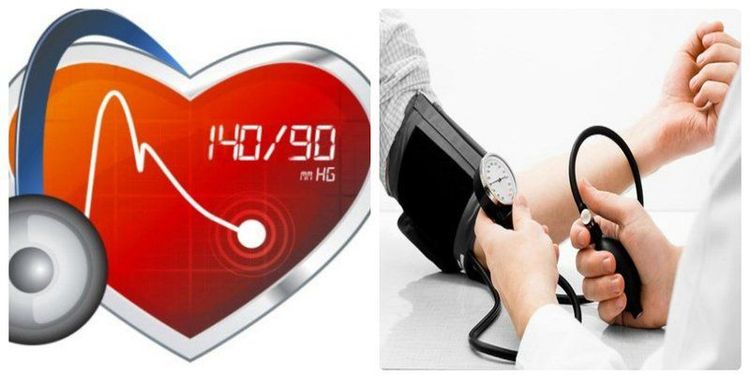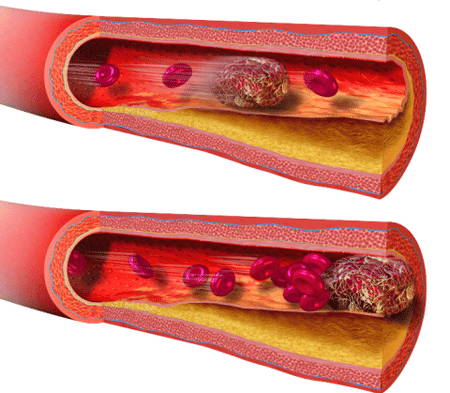This is an automatically translated article.
In gestational hypertension there are many different diseases, occurring at different times, be it gestational preeclampsia, severe preeclampsia or mild preeclampsia, or some other pathology, Therefore, it is necessary to closely monitor the health of pregnant women to be able to detect these diseases in time.
1. Gestational hypertension
Gestational hypertension is a medical condition that occurs when the diastolic blood pressure rises above 90 mmHg and the systolic blood pressure rises more than 140 mmHg in pregnant women. In addition, gestational hypertension can also be defined as an increase in diastolic blood pressure of 15 mmHg or systolic blood pressure of 30 mmHg when compared with a woman's previous normal blood pressure. during pregnancy. One thing to note is that to most accurately diagnose gestational hypertension, it is necessary to measure blood pressure after resting the patient in bed for about 10 minutes. According to some studies, the rate of gestational hypertension occurring in the first pregnancy is about 10%, and in pregnancy in general it is about 8%.
Gestational hypertension includes many clinical forms, which can be chronic hypertension persisting during pregnancy or even after pregnancy, gestational hypertension, gestational preeclampsia , eclampsia or preeclampsia in a patient with pre-existing chronic hypertension:

Chỉ số huyết áp cao hơn 140/90 mmHg trước khi mang thai có thể do bị tăng huyết áp mạn tính
Chronic hypertension: the patient's blood pressure reading is higher than 140/90 mmHg before pregnancy or before the 20th week of pregnancy, which can persist for more than 6 weeks postpartum. Gestational hypertension: detected after 20 weeks of pregnancy and no signs of proteinuria, can progress to gestational preeclampsia, if the blood pressure readings return to normal values, it is called elevated Transient gestational hypertension, if it continues to rise thereafter, is diagnosed as chronic hypertension. Gestational preeclampsia: is a condition in which hypertension is first detected after 20 weeks of gestation and signs of proteinuria or proteinuria are at least 300 mg/24 hours. Eclampsia: A condition in which convulsions occur without other common causes, usually occurring about 2 days after birth.
2. Signs of gestational hypertension
Signs to diagnose diseases of gestational hypertension are very diverse and need to be clearly differentiated in order to have the most effective treatment measures.

Huyết áp tâm trương của thai phụ trong khoảng 90 – 110 mmHg và được đo 2 lần,có protein niệu có thể là dấu hiệu tiền sản giật nhẹ
2.1. Chronic hypertension before pregnancy Diastolic blood pressure of 90 mmHg or higher before 20 weeks of gestation or can be diagnosed by a blood pressure reading greater than 140/90 mmHg before pregnancy or detected before the 20th week of pregnancy. Some cases of hypertension are also diagnosed after 20 weeks of gestation, but this high blood pressure persists until about 12 weeks or more after birth, it is also diagnosed as chronic hypertension.
2.2 . Gestational hypertension Gestational hypertension is diagnosed when the diastolic blood pressure is about 90-110 mmHg and is measured twice, 4 hours apart at more than 20 weeks of gestation and there are no signs of pregnancy. proteinuria. This is a condition caused by pregnancy that causes the mother's blood pressure to rise abnormally.
2.3. Mild preeclampsia Mild preeclampsia is a condition in which a diastolic blood pressure reading in the range of 90-110 mmHg is measured twice, each time 4 hours apart, and the time to detect this condition is after 20 weeks of pregnancy. week old. In particular, in mild preeclampsia, there must be signs of proteinuria, in addition to the absence of other symptoms.

Dấu hiệu tiền sản giật nặng
2.4. Severe preeclampsia Diastolic blood pressure of 110 mmHg or higher and systolic blood pressure of 160 mmHg or higher at more than 20 weeks of gestation, and proteinuria is very high in severe preeclampsia. Unlike mild preeclampsia, severe preeclampsia may be accompanied by a number of other symptoms such as increased reflexes, headache, dizziness, dizziness, decreased vision, oliguria, epigastric abdominal pain, edema lung and some other abnormal laboratory signs.
2.5. Eclampsia Eclampsia is a condition in which convulsions occur in 4 stages including infiltration, tonic-clonic jerks, interval jerks, and finally coma. In addition, in eclampsia, there may be some manifestations of severe preeclampsia as above.
2.6. Gestational preeclampsia on the background of chronic hypertension With gestational preeclampsia in a patient with a previous history of chronic hypertension, the new-onset proteinuria is usually higher than 300 mg/24 hours, and Previously, there was hypertension but no proteinuria at the time of pregnancy is less than 20 weeks. In addition, this condition can also be diagnosed by the patient having high blood pressure with signs of sudden increase in proteinuria, or a platelet count that falls below 100,000 units/. mm3 of blood.
4. Treatment regimen for gestational hypertension

Điều trị tăng huyết áp thai kỳ cần lựa chọn thuốc hạ huyết áp an toàn cho người mang thai
Some basic management principles should be kept in mind when facing a pregnant woman with gestational hypertension:
Consider terminating the pregnancy to protect the health of both mother and fetus pediatric. Most management of gestational preeclampsia by increasing urinary sodium excretion and lowering blood pressure will enhance the pathophysiological changes of the patient.
Specific treatment of gestational hypertension:
It is necessary to select antihypertensive drugs that meet the safety criteria for pregnant women, the route of administration depends on the expected date of delivery and the drug must not affect the health of the fetus. perfusion of the uterus and placenta. If the time of delivery is 48 hours later, Methyldopa will be the first choice because it is relatively safe for the mother. In addition, the drug Labetalol used orally is also a reasonable choice, sometimes beta-blockers and calcium inhibitors can also be used, but less often. In addition, to prevent possible eclampsia and to protect the nervous system of infants born before 30 weeks of age, magnesium sulfate and calcium channel blockers may be considered. use
5. Conclusion
Gestational hypertension is a common medical condition for pregnant women, including many different diseases such as chronic hypertension, gestational preeclampsia, eclampsia... with symptoms and ways different treatment. Therefore, when there are any abnormal signs, pregnant women need to go to reputable medical facilities to be examined as soon as possible, detected at the right time for effective treatment and reduce the risk of complications. danger to the health of both mother and baby.
To protect the health of pregnant women and their babies during pregnancy, Vinmec International General Hospital provides a package of maternity services as a solution to help pregnant women feel secure because of the companionship of the medical team. doctor throughout pregnancy. When choosing Maternity Package, pregnant women can:
The pregnancy process is monitored by a team of highly qualified doctors Regular check-ups, early detection of abnormalities The package pregnancy helps to facilitate convenient for the birthing process Newborns get comprehensive care
Please dial HOTLINE for more information or register for an appointment HERE. Download MyVinmec app to make appointments faster and to manage your bookings easily.













